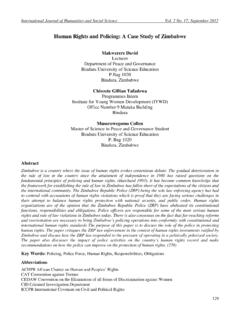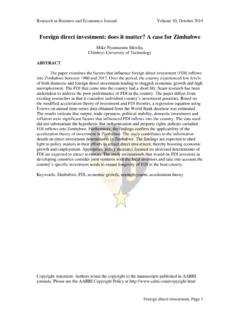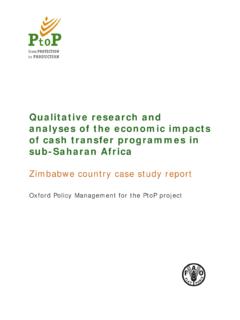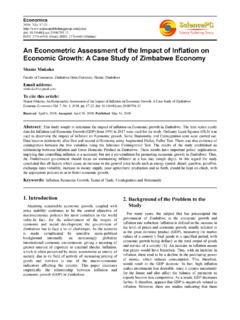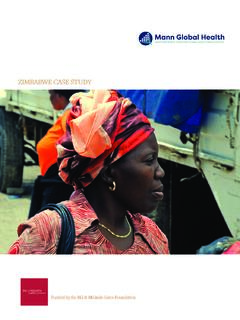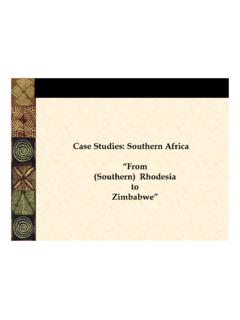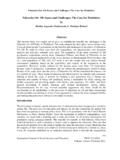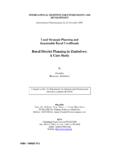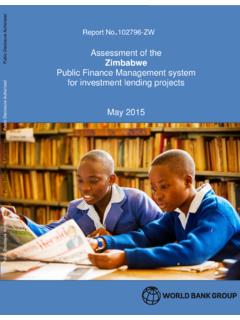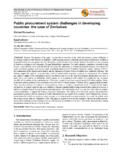Transcription of COUNTRY CASE STUDY - Cesvi Onlus
1 2015 case STUDY | Name des Kapitels 1 WORKING TO ZERO HUNGERZIMBABWECOUNTRY case STUDY 2 Content | COUNTRY case StudyCONTENTINTRODUCTION 3 zimbabwe : COMMUNITY RESILIENCE AND SUSTAINABLE AGRICULTURE 4 BIBLIOGRAPHY 14 By ending rural poverty and empowering women; by transforming agriculture and food systems in a way that makes them inclusive, resilient, and sustainable; and by preserving ecosystems and natural resources, we can achieve Zero Hunger. David Nabarro, Special Adviser on 2030 Agenda for Sustainable Development and Climate Change 2016 Global Hunger Index: Getting to Zero HungerCountry case STUDY | Introduction 3 INTRODUCTIONThe Global Hunger Index (GHI) 2016 confirms that 50 countries in the world have serious or alarming hunger levels, and over 795 million people suffer from hunger, mainly in Africa south of the Sahara and South Asia.
2 These figures appear incompatible with the full achievement of the second Sustainable Development Goal (SDG 2), which aims to eradicate global hunger by 2030. Africa will face a long and difficult journey. Many believe that agriculture is the only way out of hunger and poverty for the African continent. A modern, market-oriented, sustainable and inclusive agriculture as indi-cated by the SDG 2: increase the agricultural productivity and incomes of small-scale food producers (..) including through secure and equal access to land, other productive resources and inputs, knowledge, financial services, markets ( ); ensure sustainable food production systems and implement resilient agricultural practi-ces that increase productivity and production, that help maintain ecosystems, that strengthen capacity for adap-tation to climate change, extreme weather, drought, flooding and other disasters and that progressively impro-ve land and soil quality ( ); increase investment, including through enhanced international cooperation, in rural infrastructure, agricultural research and extension services, technology development (.)
3 ( ). Cesvi and the Shashe community, along with all the public and private actors involved in the project, have set these same goals to be achieved even before 2030. By that date, the Shashe Citrus Orchard will be able to produce over 6,000 tons of oranges to be sold on the national market, in particular to juice and con-centrate producers. This journey started in 2011. There is still a long way to go for the over 1,000 residents involved, but the first significant results are already visible. What are the main features of this initiative?Beneficiaries leading role at the heart of international development. Cesvi has been following this prin-ciple in zimbabwe since 1998. That year, it started working for the Great Limpopo (the first and at the time the biggest Peace Park wanted by Mandela on the border between South Africa, Mozambique and Zim-babwe) to become a development driver for all those communities that had been sometimes impoverished by the creation of natural parks themselves.
4 And then in 2001, when HIV/AIDS in zimbabwe spread to its highest level, Cesvi launched its bold programme Stop AIDS at birth which had a great impact on the way the dise-ase is fought in the whole of Africa south of the Sahara thanks to the active role of mothers. And finally, it implemented the Shashe Citrus Orchard, which allowed for the cultivation of 22,000 oranges on over 90 hecta-res of communal land , following a decision by the same Shashe community. Food security. Shashe community can overcome the spiral of hunger and poverty thanks to an adequa-te agricultural production and the opportunity to access local and national markets, in collaboration with the private sector both for sales and the processing of products. Tradition and innovation. The agricultural production which was introduced 50 years ago by the colo-nial settlers and then abandoned, also due to political choices, is today being restored and supported by modern infrastructures and technologies.
5 These allowing, for example, 50% saving of water and energy compared to the traditional methods used in that area. Agriculture as opportunity. Farming is complex in Shashe. The majority of small farmers are women. Men emigrate in South Africa looking for a more stable and profitable job. Today new opportunities are acces-sible for everyone in the Shashe Community. Emigration is not the only and resilience. The dissemination of new knowledge and the enhancement of traditions can contribute to a community s environmental, social and financial sustainability and higher resilience to adverse climate conditions and phenomena such as El Ni o, which are making an already semi-arid land less and less productive. Giangi MilesiPresident Cesvi4 zimbabwe : community resilience and sustainable agriculture | COUNTRY case STUDY zimbabwe : COMMUNITY RESILIENCE AND SUSTAINABLE AGRICULTURE zimbabwe is ranked 99 of 118 countries in the 2016 Global Hunger Index.
6 It is one of the Sub-Saharan countries worst hit by El Ni o with more than * million people suffering from food insecurity. Capital City Beitbridge District, Matabeleland South ProvinceShashe, Cesvi project areaHARARESHASHE* Sources: SADC/VAC, Humanitarian Partners, FEWSNET, WFP, FAO (September 2016). COUNTRY case STUDY | zimbabwe : community resilience and sustainable agriculture 5 SOUTHERN RHODESIA PROCLAIMED ITSELF AS AN INDEPENDENT Republic from Great Britain in 1965 through a unilateral declaration of the white minority, but very soon it became the theatre of a terrible civil war between British settlers (promoters of the COUNTRY s autonomy) and the local population. This war caused over 30,000 dead (BBC 2002) and last-ed until 1979. The following year democratic elections were held, which brought to power the Zanu-Pf party ( zimbabwe African National Union Patriotic Front) and its leader Robert Gabriel Mugabe, who is still the coun-try s President.
7 The COUNTRY changed its name to zimbabwe , after the name of an impor-tant archaeological site (Great zimbabwe , in Shona language zimba rem-abwe means great stony house ) which hosts impressive stone buildings that are very rare in other African regions. Towards the end of the '90s, Mugabe started a land redistribution plan, the Land Acquisition Act, through which about half of the 11 million hect-ares of land that were in the hands of over 4,000 colonial agricultural com-panies were redistributed (Treccani 2016). Together with other controver-sial economic choices, this measure led to a deterioration of the COUNTRY s agricultural economy, whose effects are still visible today. Agriculture remains the main source of income for about 65% of the population (Treccani 2016) and it could potentially provide significant returns from exports, but the limited availability of capital and equipment, and a still unattractive environment for foreign investments limit actual growth.
8 Today the COUNTRY , which was known as Africa s granary and was the world s second biggest tobacco producer, is in deep crisis: it does not export anymore and has become a net importer of food (it bought one mil-lion tons of maize, mainly from Zambia, in 2015) and other basic goods. In the period 1984-2013 zimbabwe witnessed over a hundred sudden increases in imports in difficult financial moments, overcoming the aver-age level of imports by 30% (SOFI, FAO 2015). After long periods of hyperinflation, in April 2009 zimbabwe aban-doned its own currency (the Zimbabwean dollar, which was officially with-drawn in June 2015) and adopted a multi-currency regime with nine for-eign currencies accepted in economic and financial transactions. The US dollar is the most widely used (90% of the total) while the South African rand accounts for 5%. zimbabwe ranks 155 out of 187 countries in the Human Develop-ment Index (HDR, UNDP 2015), it counts 5 million people undernourished (FAO 2015) and it ranks 99 out of the 118 countries analysed in the 2016 Global Hunger Index (2016 GHI, von Grebmer et al.)
9 , 2016).Prolonged poverty plays a critical role in making hunger a persis-tent problem in zimbabwe . 10 million people live in chronic poverty and 72% of the rural population live on less than USD a day (HRP, UNOCHA 2016). Malnutrition, food insecurity, very high levels of HIV/AIDS (1,400,000 HIV-positive people, UNAIDS 2015) and a persistent econom-ic crisis keep the population in an extremely vulnerable condition. children die before the age of children under five are children under five are wasted. population is undernourished. In the most difficult moments, I remind everybody that it all seems impossible until it s done. Failing is not an option. Munyaradzi KatemaunzangaCesvi coordinator in Shashe6 zimbabwe : community resilience and sustainable agriculture | COUNTRY case STUDY Agricultural crisis, drought and food insecurityZimbabwe, with an agricultural sector already in crisis, is one of the Sub-Saharan countries worst hit by El Ni o, a cyclical climatic phenomenon (every 2-7 years) which is characterized by an anomalous rise in the temperature of the central Pacific Ocean between December and January.
10 It brings a significant reduction in rain and drought, often with serious consequences for agriculture and food securi-ty in entire regions. The 2015-16 El Ni o was particularly long and intense with a negative impact on crops and live-stock, and consequences for millions of people worldwide (FAO 2016). The extreme drought of the 2014-15 season (Decem-ber/March) led to a lack of over one million tons of maize over a total of the million that are necessary to meet national needs, forcing the COUNTRY to import maize from Zambia, which had had a significant surplus. A further dete-rioration due to scarce rain was recorded in the 2015-16 season: another loss of one million tons of maize (WFP 2016), which the government will have to import from extra regional markets, as most of the countries in the region also recorded losses due to the drought and need to import as well for their own internal needs. The only COUNTRY which recorded a surplus is Zambia, but it can t satisfy the requests from the whole of Southern Africa on its own.
